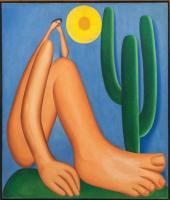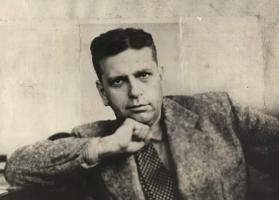Avant-garde: characteristics, authors and works
We call avant-garde to the set of revolutionary trends in art and literature that took place at the beginning of the 20th century, which sought, on the one hand, to break with tradition and academicism; on the other, the search for aesthetic innovation.
Due to this vocation for change and innovation, these movements were grouped into the category of vanguards, term borrowed from military slang and French avant-garde, which means "the one who goes ahead".
The avant-gardes of the 20th century established a turning point in the history of art and culture. At the time, for some they represented the liberation of the creative spirit; for others, the loss of efficacy of art as a public matter, if not a frank challenge to the notion of art. Curiously, the second did not negate the first.
In the midst of the extremely extensive aesthetic and ideological variety of the avant-gardes, one thing the artists shared: the differentiating will of style. But what are its characteristics? What were the most important movements? How did they influence the story? What was the historical context and how did it influence its development? How did the avant-garde originate?
Characteristics of the vanguards
A logical question is obvious. If the contexts and generations between the two waves of avant-garde are so different, what can they have in common so that they can all be registered in the category of avant-garde? Why movements like Impressionism, as well as other contemporary movements with these currents are not included in the list? Let us know what are the main characteristics of avant-garde in the following lines.
Rupturism

If something characterized the avant-gardes, it was their desire to break with tradition. The historical avant-gardes tried by all means to break with the paradigms of academicism to find new creative paths.
Opposition to imitation of nature
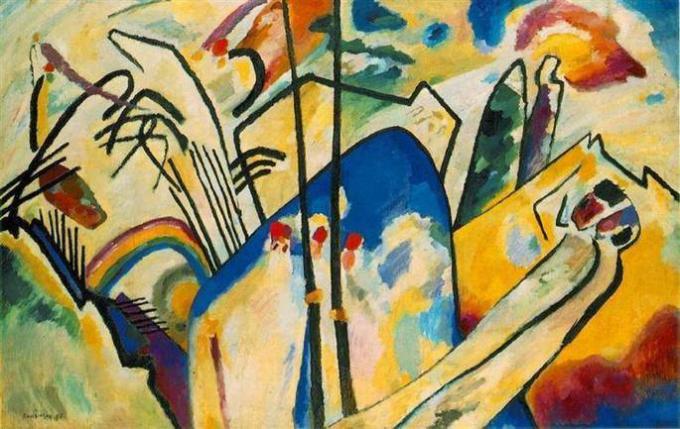
Until the 19th century, Western art was measured by virtue of the artist's technical ability to imitate nature, in addition to his compositional ability. The questioning of academicism and the appearance of new image technologies allowed art to be freed from this function.
Interdisciplinary character

A frequent element in the avant-garde is the narrowing of the relationship between different artistic expressions such as painting, literature, performing arts and music. For example, movements like Futurism, Dadaism, and Surrealism were plastic and literary at the same time.
For this reason, it was common in the plastic arts to resort to the word (to literature) to actively publicize the programmatic assumptions of artistic movements. This is how the manifestos of the historical avant-gardes in particular arose.
Experimental character
The spirit of the avant-garde was marked by the experimental character. Both in the plastic arts and in literature, the compositional elements (materials, words, sounds) were subjected to an intense process of creative inquiry that was intended to test the limits of the disciplines artistic.
Proclamation of the autonomy of the plastic and literary language
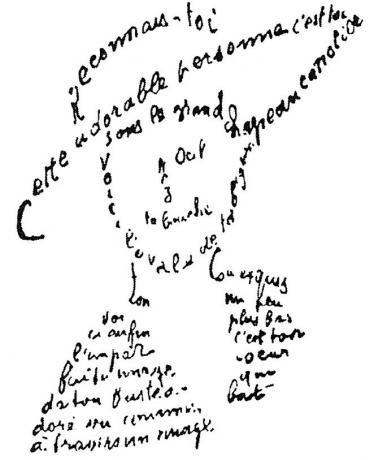
These elements allowed, for the first time in the history of art, the attention was strictly focused on the plastic language, valuable in itself, instead of the subject. An equivalent thing also happened with literary language, from which it was expected to highlight values such as sonority and beauty of the creative association of images, not necessarily intelligible but seductive in its way.
Search for originality
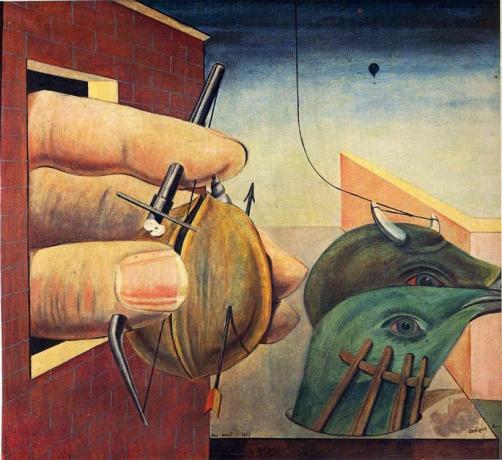
According to Pierre Francastel, if something had favored impressionism several decades before the avant-gardes, it was the differentiating will of style among artists. When to this was added the rejection of art as an imitation of nature, the search for originality became an artistic obsession of the first wave of avant-garde in particular.
Conceptual character

If the search for originality was initially focused on plastic language, little by little the focus of attention shifted to the concept itself. This was very evident in the case of the second wave of avant-gardes,
Provocation, humor and sarcasm
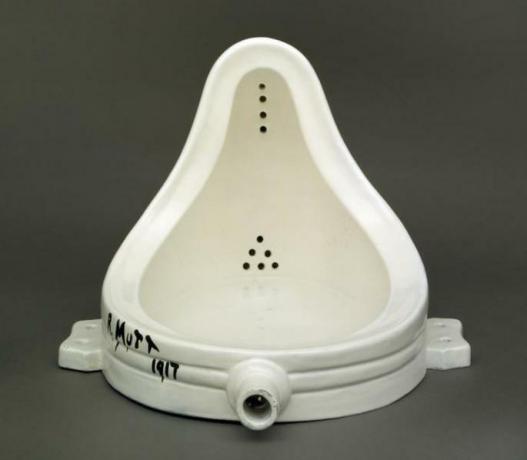
Because they were disruptive, the avant-gardes also pretended to be provocative, defiant, and in some cases sarcastic. The voice of the artist was more and more present, and little by little currents emerged in the midst of them highly critical of the state of things.
Freedom of expression

Avant-garde artists and writers aspired to absolute freedom of expression. Art and literature were conceived as a platform from which freedom of thought and creative freedom could be exercised.
Short duration
The disruptive character of the avant-garde and the search for originality were determining factors in the brevity of each avant-garde cycle. The duration of the movements was different, but in general they were of short duration, since the need for permanent innovation naturally undermined the establishment of a tradition. Thus, the only possible tradition was that of change itself.
Questioning the concept of art
The avant-gardes also questioned the concept of art, as well as the circuits for its dissemination and legitimation. This is the case, for example, of what Duchamp did with his work The Fountain, an inverted urinal intervened with the author's signature (pseudonym R. Mutt).
Requirement of a trained public

The artistic avant-gardes, by always trying to break with the preceding styles or movements and by focus on the value of plastic language in itself, they stopped dialoguing with the cultural context in its sense wider. Interpreting and evaluating the avant-garde necessarily involves knowing the history of art.
Avant-garde movements of the first half of the 20th century
The dizzying historical dynamism of the 20th century and the difference in character and purpose between the avant-gardes, has been a decisive factor when it comes to studying them. In the field of art history, in fact, two moments of avant-garde are distinguished:
- the historical avant-gardes, which span the first half of the 20th century until the outbreak of the Second World War.
- the second wave of vanguards, which began after the end of the Second World War.
Each of these stages was mobilized by different contexts, generations, purposes and interests. Hence the need to section off his study. In this article, we are going to dedicate ourselves to reviewing the calls historical vanguards that are expressed both in the plastic arts and in literature.
To learn about the main historical avant-gardes and get an idea of the order of their appearance, we present a list that includes the following data:
- Movement, year
- type of movement (literary or artistic)
- place of origin or source of irradiation
- main representatives and
- founder manifest (if you have it).
-
Expressionism, h. 1905
- Artistic, literary, musical and cinematographic movement.
- Germany.
- Artists: Ensor, Emil Nolde and Ernst Ludwig Kirchner. Writers: Georg Heym. Musicians: Arnold Schoenberg. Filmmakers: F.W. Murnau.
- Manifest Programm, 1906. He used the name Expressionism beginning in 1911.
-
Cubism, 1907
- Artistic movement
- France
- Artists: Pablo Picasso, Juan Gris, George Braque.
- Cubist manifesto (1913), by Guillaume Apollinaire
-
Futurism, 1909
- Artistic and literary movement
- Italy
- Artists: Umberto Boccioni, Giacomo Balla, Gino Severini. Writers: Filippo Tommaso Marinetti.
- Futurist manifesto (1909), by Fillippo Tomasso Marinetti
-
Lyrical abstraction, 1910
- Artistic movement
- Vasili Kandinsky, Paul Klee, Robert Delaunay
- It did not generate a manifesto, but the year of the work that started the movement coincided with the publication of the text Of the spiritual in artby Kandinsky (1910).
-
Dadaism, 1916
- Artistic and literary movement
- Zurich, Switzerland
- Writers: Hugo Ball, Tristan Tzara. Artists: Marcel Duchamp, Jean Arp, Marcelo Janco.
- Dadaist manifesto (1918), by Tristán Tzara
-
Constructivism, 1914
- Artistic movement
- Russia
- Aleksandr Rodchenko, Vladimir Tatlin, El Lissitzky.
- Constructivist Manifesto (1920), written by Naum Gabo and Antoine Pevsner
-
Suprematism, 1915
- Artistic movement
- Russia
- Kazimir Malevich
- Suprematist manifesto (1915), by Kazimir Malevich
-
Creationism, h. 1916
- Literary movement
- Spain
- Vicente Huidobro
- Manifesto "Non serviam" (1916), by Vicente Huidobro
-
Neoplasticism, 1917
- Artistic movement
- Netherlands
- Piet Mondrian, Theo Van Doesburg, Bart an der Leck, J.J.P. Oud, Gerrit Rietveld.
- Neoplasticist manifesto (De Stijl) (1917), by Theo Van Doesburg, Piet Mondrian, Bart an der Leck, J.J.P. Oud
-
Ultraism, 1918
- Literary movement
- Spain
- Rafael Cansinos Assens and Guillermo de Torre.
- Ultraist manifesto. 1918, collective version directed by Cansinos Assens. 1920, version by Guillermo de Torre. 1921, version by Jorge Luis Borges
-
Surrealism, 1924
- Artistic and literary movement
- France
- Artists: Man Ray, Marcel Duchamp, Francis Picabia, Max Ernst, Salvador Dalí. Writers: André Breton, Louis Aragon, Guillaume Apollinaire, Philippe Soupault, Federico García Lorca.
- Surrealist manifesto (1924), by André Bretón
Of all of them, one was separated in time: surrealism, which appeared only in the interwar period, that is, between the First and Second World Wars.
You may also like:
- Dadaism: context, history, characteristics and main representatives.
- Cubism: history, characteristics and most important artists.
- Art deco: characteristics, history and representatives.
Historical context of the avant-gardes
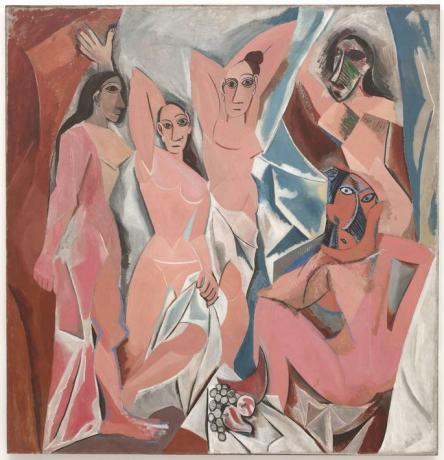
The spirit of change in the young artists and writers of that generation was consistent with a social context that was in vigorous political, technological, economic and social transformation of the century XIX. A number of facts were crucial:
- The installation of the ideology of progress as a new historical narrative, stimulated by the exponential growth of scientific research and industrial economic growth.
- The commercial exchange stimulated by the new imperialism in the making, which allowed access to exotic merchandise for the European world, which aroused the curiosity of artists and intellectuals.
- The extraordinary technological development, especially after the second industrial revolution, which changed the perception of time and space (cars, airplanes, telegraphs, telephones, military weapons of mass range, etc.).
- The emergence of imaging technologies, such as the photographic camera (c. 1826) and the cinematograph (c. 1895), which ushered the world into the so-called “era of technical reproducibility”, according to Walter Benjamin. If imaging technologies could accurately reproduce nature and document history, what role would the arts play?
- The accelerated social transformation and the malaise generated by the tensions between the new social classes: the upper bourgeoisie, the middle class and the proletariat, as well as the formation and consolidation of the society of masses.
- The increasing autonomy of the art world from the patronage of the State, which on the one hand gave it greater freedom to the artist, and on the other he confined art to the sphere of interests of the private market, mobilized by the logic of consumption.
The arts in the transition to the 20th century

The search for an artistic change had already become present in the 19th century thanks to the appearance of the impressionism and, behind him, of postimpressionism, embodied in the proposals of artists such as Paul Cézanne, Henri Matisse, Paul Gauguin and Vincent van Gogh, among others.
However, despite how revolutionary these movements were, they are not considered as avant-garde since they continue attached to the principle of imitation of nature and the transcendence of the subject, foundations of Western art until the century XX.
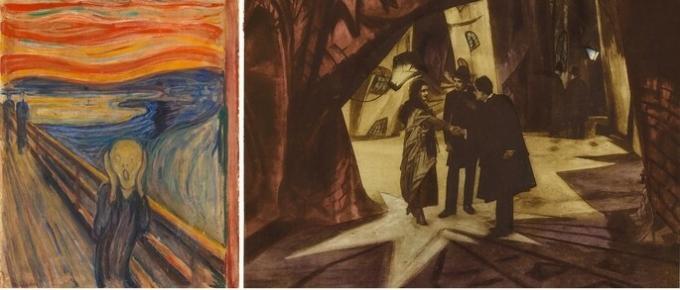
Around 1890 a trend of crucial importance emerged, which many include within the avant-garde because it lasted until the 1930s: the expressionism.
This movement was not limited to the plastic arts in the work of artists such as Edvard Munch, James Ensor, Ernst Ludwig Kirchner and Franz Marc. Expressionism was also a literary movement and, in the case of Germany, it was a true cinametographic avant-garde, which gave rise to films such as Nosferatuby Friedrich Wilhelm Murnau; The Cabinet of Dr. Caligariby Robert Wiene and Metropolisby Fritz Lang.
Shortly after, the fauvism or fovism, in force between 1904 and 1908, represented by artists such as Matisse and Derain. Fovism took its name from French fauve, which means 'beast', and intended to concentrate the expressive and formal key in color.
These movements brought with them the germ of a true revolution in art. However, the historical avant-gardes as such were born around 1907 when Picasso presented the painting that would revolutionize the history of art: The Avignon ladies.
Final thoughts
In an essay titled Behind, historian Eric Hobsbawm argues that the historical avant-gardes sought to emulate progress scientist in art and / or the desire to express the new times, but failed in their purposes. First, because the concept of progress is not applicable to the field of art; second, because at least in painting, they remained tied to the easel in a time dominated by technical reproducibility; finally, because they failed in their ability to communicate with the general public. The extreme originality of the language (plastic or literary), which broke with all convention, made it incommunicable for the non-enlightened public.
Still, the avant-garde exerted an enormous influence on the world in unnoticed ways that not even the artists themselves, with some exceptions, could guess. The first thing we can mention is the impact they had on the culture of graphic, advertising and industrial design, to which they provided a new language. The avant-gardes revitalized the art scene and inspired a culture of innovation, originality, and creativity. Today they are part of our visual, artistic and literary culture.
If you liked this article, you may also be interested in:
- Literary vanguards
- 15 avant-garde poems
- Hyperrealism

